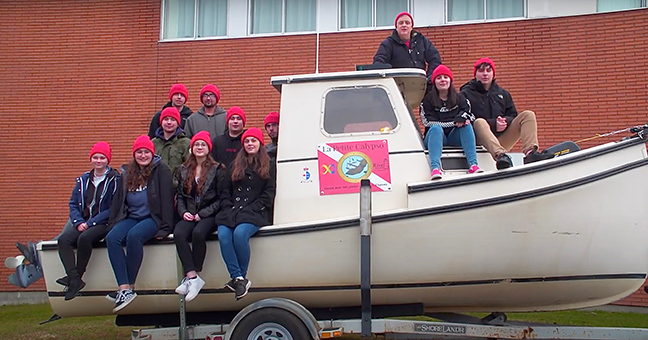Surprising life experiences and hands-on discovery are part of Jean-Marc Perreault’s immersive teaching style. A Canadian middle and high school tech and science teacher, Perreault is continually looking for opportunities to inspire and teach his students. From building a classroom space shuttle cockpit simulator to creating his own observatory that generates live images of the sun for his classroom, Perreault’s teaching style is anything but ordinary and boring.
And his most recent project is one for the books. Through the use of a small boat they acquired and sonar equipment donated by Raymarine, Perreault and his students have journeyed into the St. Lawrence Seaway to find undiscovered shipwrecks.
“I wanted to develop a practical activity my students could engage in while learning about the theoretical elements of sound waves… frequency, vectors, etc.,” Perreault says. “The aim of the program has been to demonstrate how sonar waves allow us to see what is hidden beneath the surface of the water and how the frequency of sonar influences the level of detail of the images.”
Through the use of Raymarine’s high-frequency sonar, the group of students and Perreault were able to discover 10 new shipwrecks in just one year — two of them the remains of old steamboats that have been of great interest to archaeology professionals.
“Without us, these mysterious wrecks could have remained unknown for many more years, and continued deterioration might have led to the destruction of clues that help to answer questions about these vessels’ histories,” Perreault says.
While winter has currently halted the program, the class plans to continue this year once the weather and ice permits. Despite their ingenuity and generous donations from businesses, there is always more equipment the team could use to continue their explorations, including an underwater surveillance system; windproof and waterproof coats for the students; a communications system between the diver and the surface for safety; and to better promote learning opportunities. The team is always happy to receive previously used demonstrative products or items with cosmetic defects. It’s about the process for them, and they are thankful for the help of many who have reached out.
To learn more, visit their Facebook page at facebook.com/petitecalypso/.




